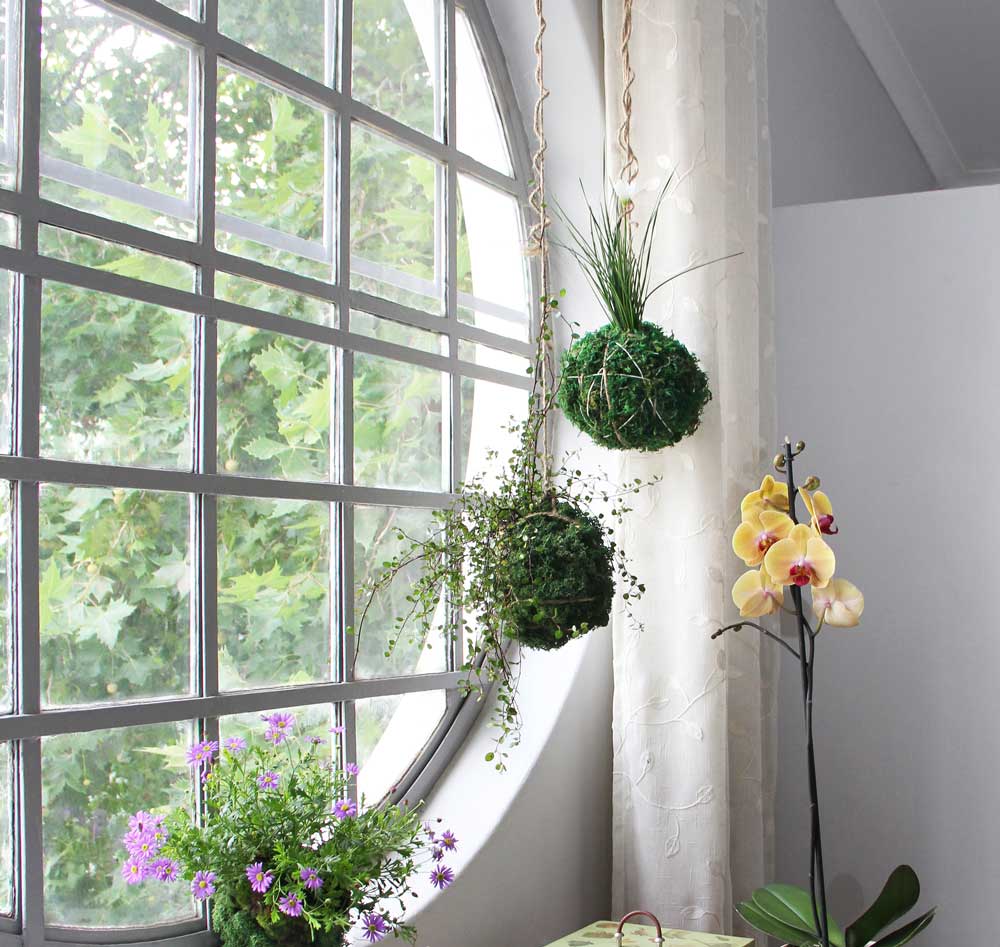Japanese moss balls, also called kokedama, are all the rage and are ideal for growing plants in small spaces.
WHAT YOU’LL NEED
- Bonsai mix
- 1 Peat or coir block
- Water
- Water-retaining granules such as Wonder Stockobsorb Waterwise Crystals
- Garden soil (optional)
- A plant
- Moss
- String or fishing line
READ MORE: How to make hanging baskets
HOW TO DO IT
STEP 1 If you want to hang the moss ball from a piece of string, you’ll need a soil mix that’s not too heavy. It should also retain water, so include coir or peat as well as water-retaining granules. Mix together four parts bonsai mix and one part coir or peat block. Moisten the coir block according to the package instructions – it will start breaking up in the water. Add a tablespoon of water-retaining granules to every 500ml of soil mix.
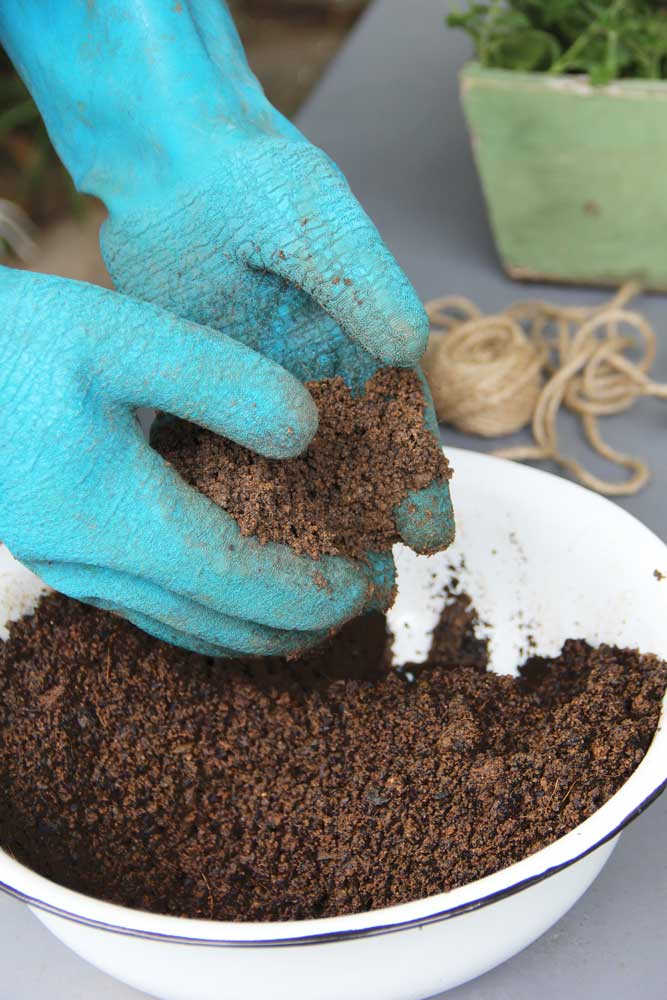
STEP 2 Add a little water to the soil mix. Try forming a ball out of the moist soil. If you can’t, it means there’s not enough clay content – add normal garden soil little by little until you can squeeze the soil into a ball.
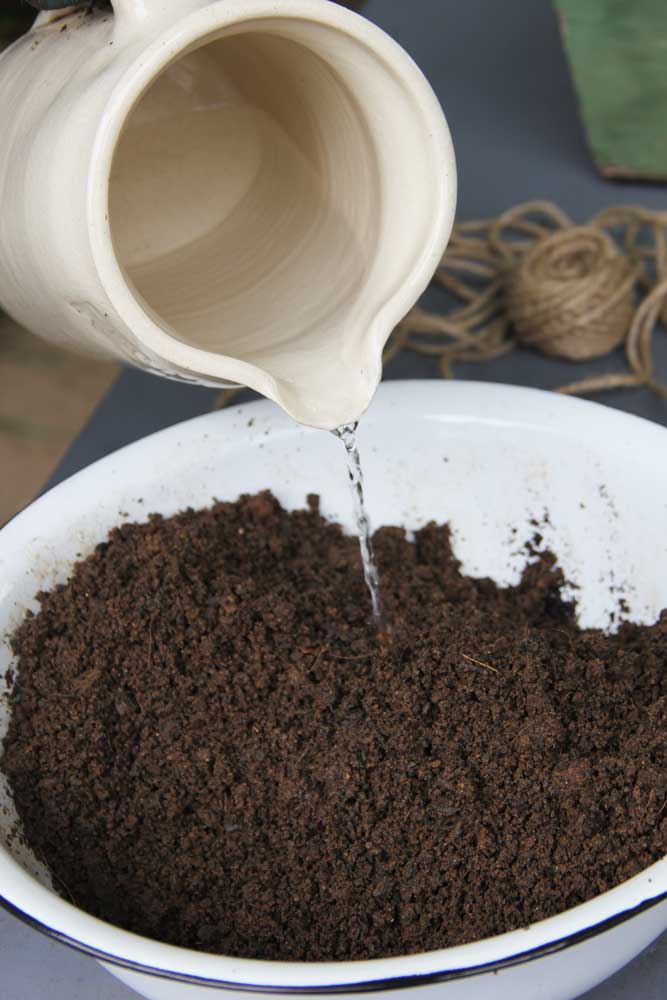
STEP 3 Mould the soil into a medium-sized ball, approximately 10cm in diameter. Use force to press the soil together. Add more water and garden soil in small quantities until you can form a bigger ball.
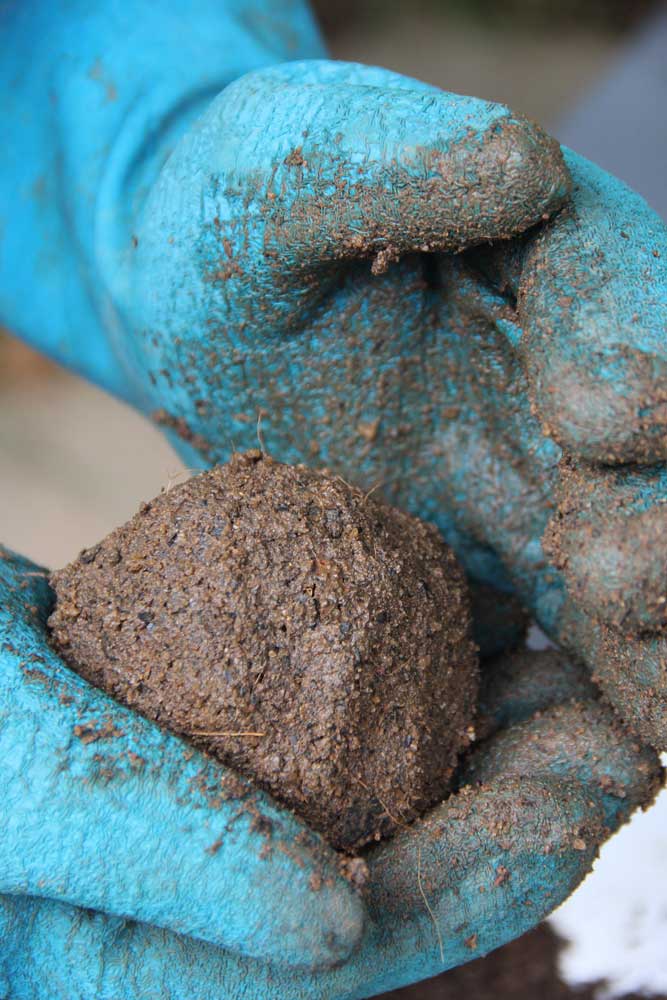
STEP 4 Take your chosen plant and gently remove all, or almost all, the soil around the roots. It’s a lot easier if you water the plant before taking it out of the pot or bag. Work quickly as the roots shouldn’t be exposed for long.
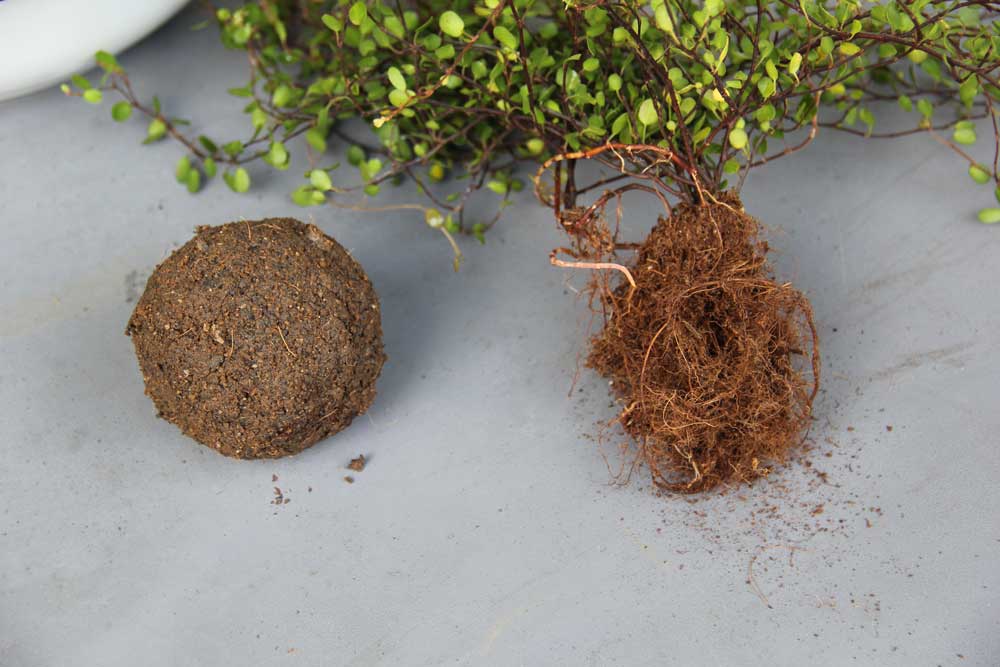
STEP 5 Break the soil ball in half, taking care not to let it crumble into pieces.
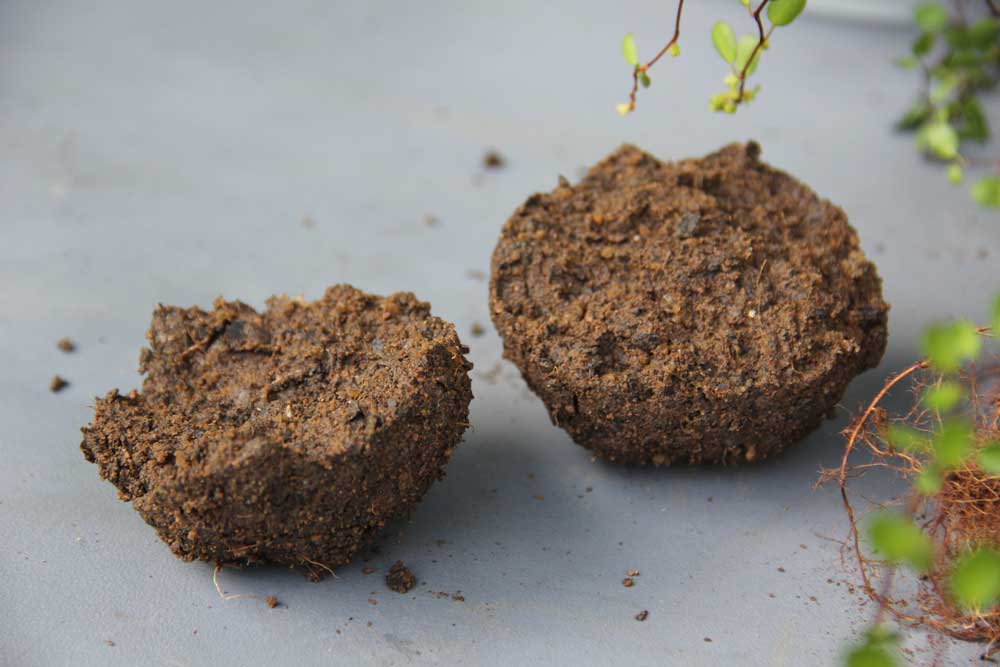
STEP 6 Cover the roots of the plant with a layer of wet coir or peat.
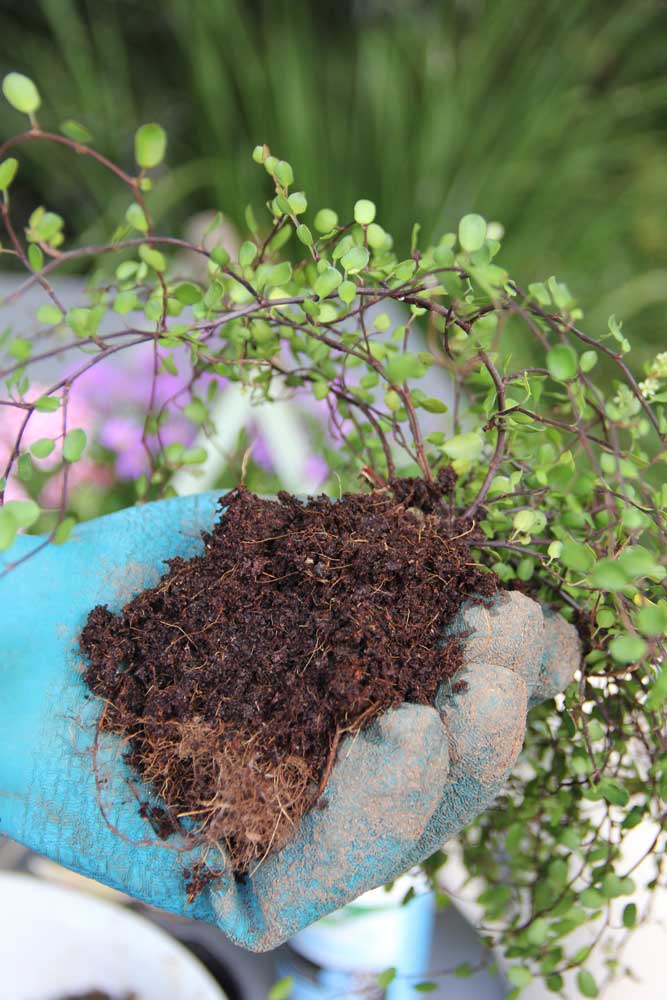
STEP 7 Place the coir-wrapped root ball between the two soil halves. Press them back together around the plant without breaking the shape.
STEP 8 Make the ball slightly bigger by adding small amounts of moist soil mix, keeping the ball shape.
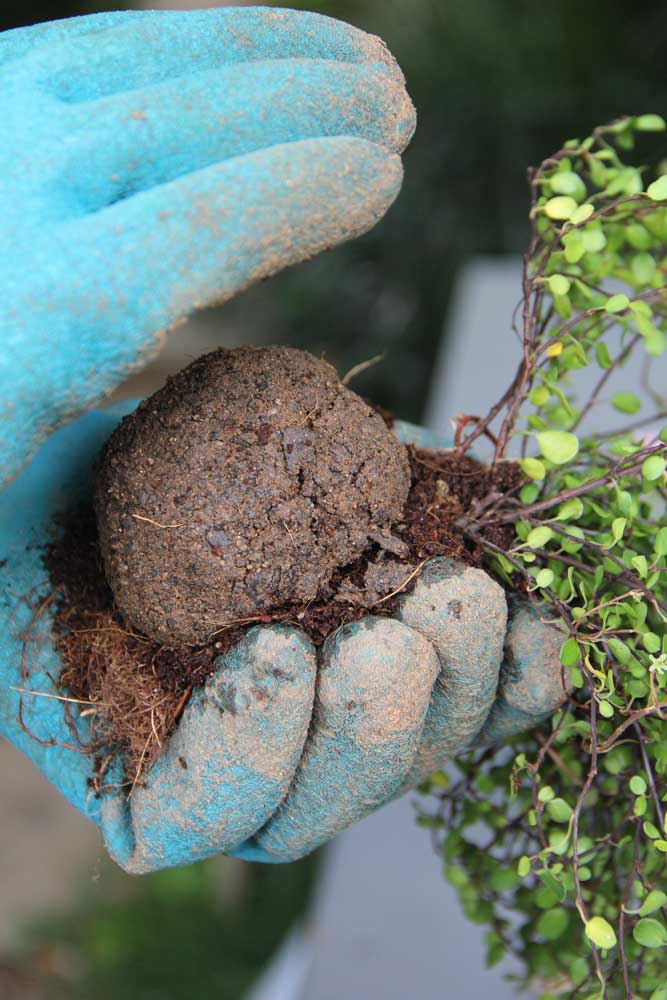
STEP 9 Wrap moss around the ball and wind string or fishing line around it until all the moss is secure. Hang the kokedama up with a piece of string in a position that’s suitable for the plant. Full sun all day isn’t recommended as the plant will dry out too quickly.
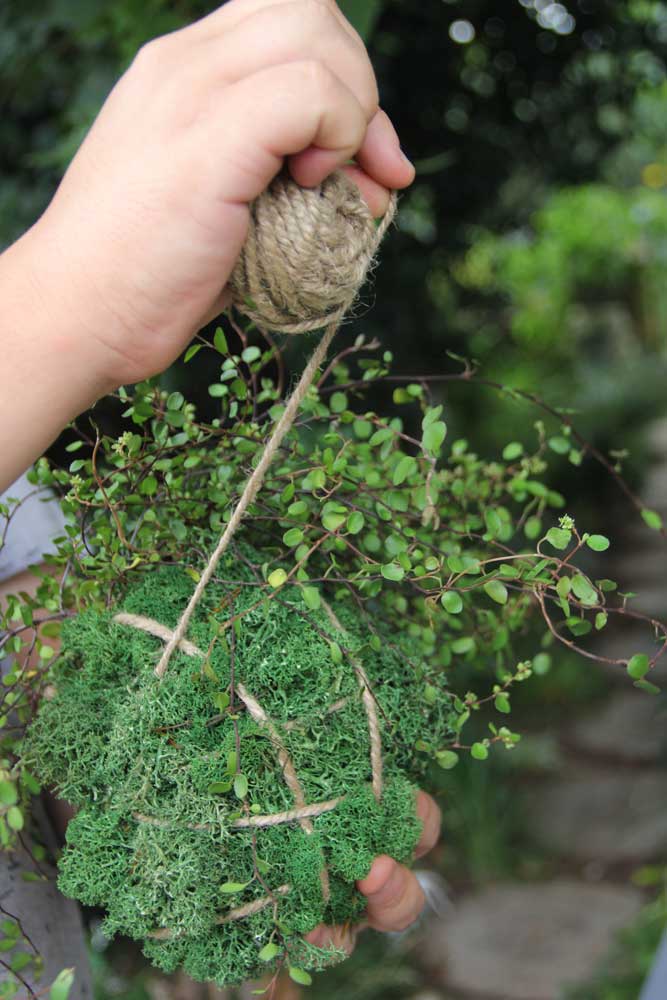 READ MORE: How to best care for indoor plants
READ MORE: How to best care for indoor plants
HANDY TIPS
- If you don’t want water to drip after watering, cover the soil ball with plastic wrap before wrapping it in moss. The drainage won’t be as good, so don’t overwater it. Ideal plant choices for this scenario are succulents and hardy, water-wise plants such as echeveria, cyclamen, gerbera, petunia, bulbine and miniature aloes hybrids.
- There are different types of moss
Living moss from a garden with lots of shady moist areas. Don’t harvest moss from nature reserves. Balls with natural moss should be dunked in water for a few minutes every other day.
Reindeer moss, imported from Scandinavia, has a soft rubbery feel and is slightly moist when fresh. The natural colour is silvery cream, but it is dyed and sold in packets. We bought dark green reindeer moss online from MossCo. Reindeer moss can’t be dunked in water but you can water the plant with a watering can with a thin spout. A layer of plastic wrap between the soil ball and the moss makes the moss last longer.
Sphagnum moss is available at most garden centres. Keep the pieces intact. If they break up into small bits, it is difficult to use. When this happens, spray the moss with water and roll the pieces together again.
- The same effect can be created using ready-made ball-shaped moss containers available at garden centres.
- Orchids can be grown in moss balls. But don’t use soil, use a mix of small bark chips and coir.
IDEAL PLANTS
- Morning sun Succulents, gerberas, swan river daisies, Cape daisies, wire vine, miniature roses, ornamental grasses, bonsai trees, petunias, miniature gardenia hybrids, pelargoniums, arctotis and diascias.
- Medium light, no sun Lilies, ferns, ornamental azaleas, peace lilies (spathiphyllum) and streptocarpus.
- For more on moss, visit mossco.co.za

